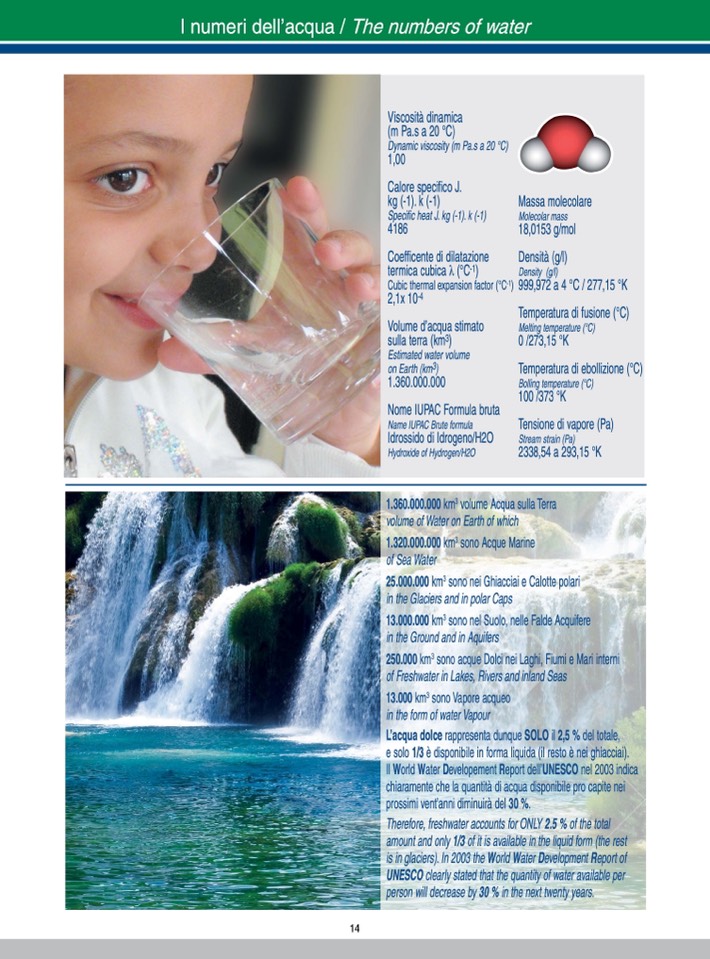
I numeri dell’acqua / The numbers of water
Viscosità dinamica
(m Pa.s a 20 °C)
Dynamic viscosity (m Pa.s a 20 °C)
1,00
Calore specifico J.
kg (-1). k (-1)
Specific heat J. kg (-1). k (-1)
4186
Coefficente di dilatazione
termica cubica λ (°C
-1
)
Cubic thermal expansion factor (°C
-1
)
2,1x 10
-4
massa molecolare
Molecolar mass
18,0153 g/mol
Densità (g/l)
Density (g/l)
999,972 a 4 °C / 277,15 °K
Temperatura di fusione (°C)
Melting temperature (°C)
0 /273,15 °K
Temperatura di ebollizione (°C)
Bolling temperature (°C)
100 /373 °K
Tensione di vapore (Pa)
Stream strain (Pa)
2338,54 a 293,15 °K
Volume d’acqua stimato
sulla terra (km
3
)
Estimated water volume
on Earth (km3)
1.360.000.000
nome IuPAC Formula bruta
Name IUPAC Brute formula
Idrossido di Idrogeno/H2o
Hydroxide of Hydrogen/H2O
14
1.360.000.000 km
3
volume Acqua sulla Terra
volume of Water on Earth of which
1.320.000.000 km
3
sono Acque marine
of Sea Water
25.000.000 km
3
sono nei Ghiacciai e Calotte polari
in the Glaciers and in polar Caps
13.000.000 km
3
sono nel Suolo, nelle Falde Acquifere
in the Ground and in Aquifers
250.000 km
3
sono acque Dolci nei Laghi, Fiumi e mari interni
of Freshwater in Lakes, Rivers and inland Seas
13.000 km
3
sono Vapore acqueo
in the form of water Vapour
L’acqua dolce rappresenta dunque SOLOil 2,5 %del totale,
e solo 1/3 è disponibile in forma liquida (il resto è nei ghiacciai).
Il World Water Developement Report dell’UNESCO nel 2003 indica
chiaramente che la quantità di acqua disponibile pro capite nei
prossimi vent’anni diminuirà del 30 %.
Therefore, freshwater accounts for ONLY 2.5 %of the total
amount and only 1/3 of it is available in the liquid form (the rest
is in glaciers). In 2003 the World Water Development Report of
UNESCO clearly stated that the quantity of water available per
person will decrease by 30 %in the next twenty years.

